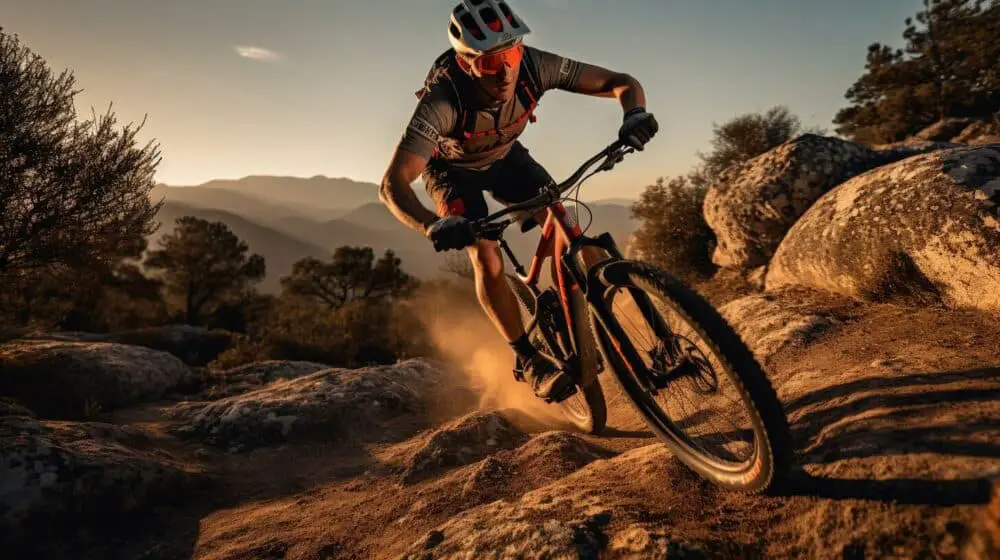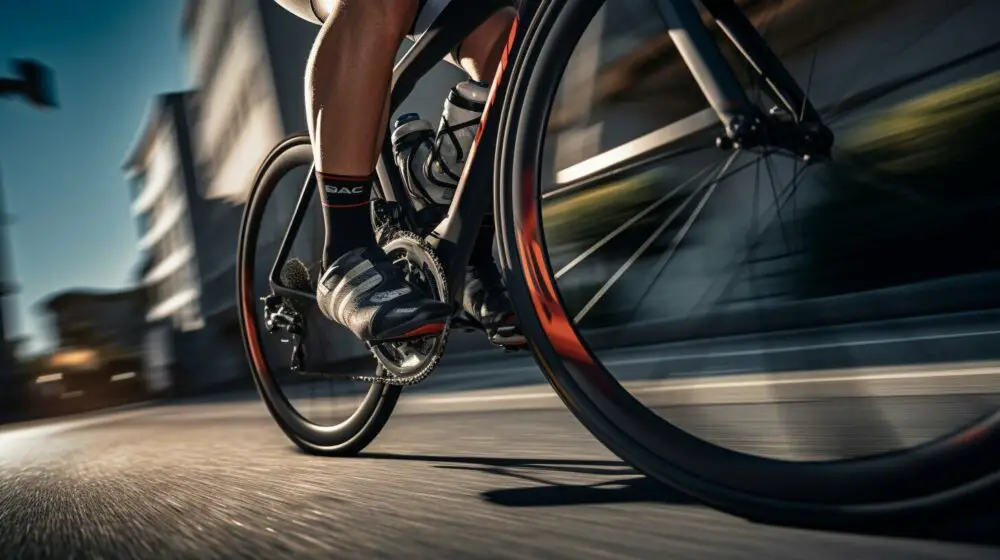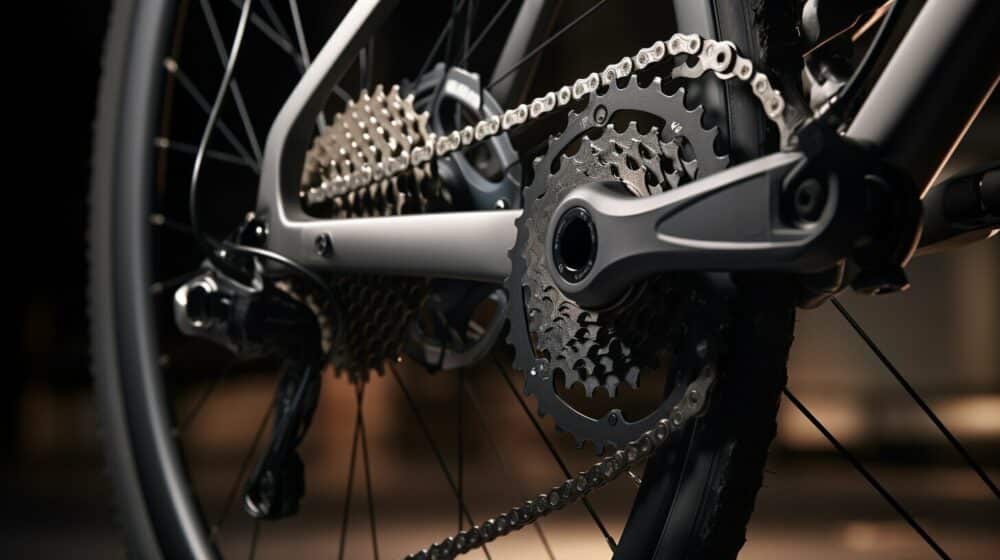How Bike Gears Work: A Closer Look
Bike gears consist of the rear gears, controlled by the rear derailleur, and the front gears, controlled by the front derailleur, which work together to provide a range of gear ratios. The rear gears, also known as the cassette or cogs, are attached to the rear wheel hub and are responsible for fine-tuning the gear ratios. They are numbered from smallest to largest, with the smallest cog providing the hardest gear and the largest cog providing the easiest gear. On the other hand, the front gears, known as the chain rings, are attached to the crankset and determine the overall gear range. The chain rings are labeled by the number of teeth, with larger chain rings providing easier gears and smaller chain rings providing harder gears.
By shifting gears, cyclists can adjust their pedaling effort and speed to match different terrains and conditions. When shifting into a lower gear, the chain moves from a larger chain ring in the front to a smaller cog in the rear, making pedaling harder but allowing for more power. Conversely, shifting into a higher gear moves the chain from a smaller chain ring in the front to a larger cog in the rear, making pedaling easier but reducing power. By utilizing different gear combinations, cyclists can optimize their pedaling efficiency and adapt to changing riding conditions.
To ensure a smooth and efficient gear shifting experience, it is important to avoid cross-chaining. Cross-chaining occurs when the chain is at an extreme slant, such as using the largest chain ring in the front and the largest cog in the rear, or vice versa. This can cause unnecessary strain on the drivetrain and result in poor shifting performance. Instead, it is recommended to find a gear combination that allows the chain to run as straight as possible. Additionally, it is important to anticipate terrain changes and shift gears before they occur, rather than waiting until the last moment.
| Gear Combination | Front Chain Ring | Rear Cog | Gear Ratio |
|---|---|---|---|
| 1 | Small | Largest | Hard Gear |
| 2 | Small | Smaller | Hard Gear |
| 3 | Small | Small | Hard Gear |
| 4 | Large | Largest | Easy Gear |
| 5 | Large | Larger | Easy Gear |
| 6 | Large | Large | Easy Gear |
Understanding how bike gears work and mastering their usage can greatly enhance your cycling experience. By utilizing the rear gears and front derailleur to adjust gear ratios, you can optimize your pedaling effort and speed to conquer various terrains. Remember to shift smoothly and avoid cross-chaining to ensure the longevity of your drivetrain. Experimenting with different gear combinations and finding your ideal cadence can further improve your pedaling efficiency. So, gear up and get ready for a smooth ride!
Quote:
“Mastering the art of gear shifting is essential for every cyclist. It allows you to conquer hills with ease and fly downhill effortlessly. Take the time to understand how bike gears work, experiment with different gear combinations, and find what works best for your riding style. You’ll be amazed at the difference it makes!”
Mastering Gear Shifters: Levers and Controls
Gear shifters play a crucial role in controlling the bike gears, and understanding how to use them will greatly enhance your cycling experience. Whether you have levers on your handlebars or dials to control your gears, knowing how to shift effectively will make your rides smoother and more enjoyable.
The left hand shifter is responsible for controlling the front gears, also known as the chain rings. Shifting into larger chain rings makes pedaling easier, while shifting into smaller chain rings makes pedaling harder. On the other hand, the right hand shifter controls the rear gears, which are located on the cassette. Shifting into larger cogs on the cassette also makes pedaling easier, while shifting into smaller cogs makes pedaling harder.
When using a lever-style shifter, you can simply push the lever to shift to the next gear. For grip shifters, which are common on mountain bikes, you rotate the grip to shift gears. Alternatively, some bikes have shift levers, which require you to push or pull a lever to change gears.
Types of Gear Shifters:
| Shifter Type | Description |
|---|---|
| Levers | Located on the handlebars, levers can be pushed to shift gears. |
| Grip Shifters | Rotated like a throttle on the handlebars to shift gears. |
| Shift Levers | Require pushing or pulling a lever to change gears. |
It’s important to avoid cross-chaining, as this can cause damage to your bike’s drivetrain. Cross-chaining occurs when the chain is at an extreme slant. To prevent this, avoid using the big chain ring in the front with the big cogs on the cassette, as well as the small chain ring in the front with the small cogs on the cassette.
To shift gears smoothly, pedal lightly while using the shifters. It’s best to shift before the terrain changes, so you can maintain a consistent pedal stroke. Experimenting with different gear combinations and finding the right cadence for your riding style will help you improve your cycling efficiency and overall performance.

In summary, mastering gear shifters is essential for controlling your bike gears effectively. Understanding how to use the left hand shifter, grip shifters, right shifter, or shift levers allows you to make smooth gear changes and optimize your pedaling effort. Avoid cross-chaining and experiment with different gear combinations to find what works best for your riding style. With practice and a good understanding of your bike’s gears, you’ll be able to unlock a smooth and enjoyable ride.
Shifting Gears Smoothly: Technique and Timing
Shifting gears is not just about pulling on the shifters; it requires finesse and an understanding of proper technique and timing. To shift smoothly and avoid unnecessary strain on your bike’s drivetrain, it’s essential to follow a few key guidelines.
First and foremost, it’s important to pedal lightly while using the shifters. Applying excessive pressure on the pedals can put stress on the chain and derailleur, leading to poor shifting performance or even damage. By maintaining a smooth and steady pedal stroke, you’ll ensure a seamless transition between gears.
Another crucial aspect of shifting gears smoothly is timing. It’s best to anticipate terrain changes and shift before you reach them. This proactive approach allows you to maintain a steady cadence and avoid sudden shifts that can disrupt your rhythm. Whether you’re approaching a hill or a downhill descent, make sure to make your gear changes in advance to maintain a smooth and efficient ride.
One common mistake to avoid is cross-chaining. This occurs when the chain is placed at an extreme slant, such as using the largest chain ring in the front with the largest cog in the rear, or the smallest chain ring in the front with the smallest cog in the rear. Cross-chaining can cause excessive wear on the chain and other drivetrain components, leading to decreased performance and potential damage. To avoid this, aim to keep the chain as straight as possible by using a combination of chain rings and cogs that align properly.
Avoid Cross-Chaining: A Quick Guide
| Front Chainring | Rear Cog |
|---|---|
| Large | Large |
| Large | Second Largest |
| Large | Third Largest |
| Small | Smallest |
By following these tips and techniques, you’ll be able to shift gears smoothly and efficiently, enhancing your overall cycling experience. Remember to pedal lightly, shift before terrain changes, and avoid cross-chaining. Experimenting with different gear combinations and finding the right cadence can further improve your pedaling efficiency and make your rides more enjoyable. So hop on your bike, put these techniques to the test, and unlock a truly smooth ride.

Finding the Right Gear: Climbing, Descending, and Flat Terrain
One of the keys to a smooth ride is selecting the right gear for the terrain you’re riding on, whether it’s a steep climb, a fast descent, or a leisurely ride on flat ground. Understanding the terminology and mechanics of bike gears will help you make informed choices. Let’s take a closer look at the different types of gears and how they can enhance your cycling experience.
When faced with a challenging uphill climb, it’s important to shift into a low gear. This makes pedaling easier by reducing the resistance. To achieve a low gear, shift into the smallest chain ring in the front and the largest cog on the cassette in the rear. This combination allows you to maintain a steady cadence and tackle steep inclines without putting excessive strain on your legs.
On the other hand, when you’re descending or riding on flat terrain, you’ll want to shift into a high gear. This allows you to maintain a faster pace with less effort. To achieve a high gear, shift into the largest chain ring in the front and the smallest cog on the cassette in the rear. This combination maximizes your speed by maximizing power transfer to the wheels.
Remember, the number of gears on a bike is determined by multiplying the number of cogs in the cassette by the number of chain rings in the front. Different types of bikes, such as mountain bikes, single speed bikes, hybrid style bikes, and road bikes, may have varying gear ratios to suit their specific purposes. Experimenting with different gear combinations and finding your preferred cadence can greatly enhance your pedaling efficiency and overall riding experience.
Choosing the Right Gear: A Summary
- Low Gear: Achieved by shifting to the smallest chain ring in the front and the largest cog on the cassette in the rear. Ideal for climbing steep hills.
- High Gear: Achieved by shifting to the largest chain ring in the front and the smallest cog on the cassette in the rear. Ideal for fast descents and flat terrain.
- Number of Gears: Determined by multiplying the number of cogs in the cassette by the number of chain rings in the front.
- Experimentation: Try different gear combinations and find the optimal cadence for your individual riding style.
By understanding how gears work and selecting the appropriate gear for each terrain, you can unlock a smoother and more enjoyable ride. So, whether you’re conquering a mountain or cruising on flat ground, make the most of your bike’s gears to enhance your cycling experience.

Enhancing Your Pedaling Efficiency: Cadence and Experimentation
Achieving optimal cycling efficiency involves not only using the right gears but also mastering your pedal stroke and finding your ideal cadence. Understanding the interplay between your pedal stroke, gear selection, and cadence can greatly improve your overall cycling experience. Let’s dive deeper into these key factors.
To begin, let’s talk about the pedal stroke. Having a smooth and efficient pedal stroke is essential for maximizing power transfer and reducing strain on your muscles. As you pedal, aim for a circular motion, applying force not only when pushing down but also when pulling up. This balanced pedal stroke helps to engage different muscle groups and maintain a consistent cadence.

Now that we’ve covered pedal stroke, let’s discuss cadence. Cadence refers to the speed at which you turn the pedals, measured in revolutions per minute (RPM). Finding your ideal cadence is crucial for optimizing your energy output and reducing fatigue. Most cyclists find a cadence between 80 and 100 RPM to be efficient, but it can vary depending on factors such as terrain and personal preference. Experiment with different cadences to find the one that feels most comfortable and allows you to maintain a steady rhythm.
Experimenting with Gear Selection
When it comes to gear selection, there are a few key considerations. The chain ring, rear cogs, and gear shifters all play a role in determining the difficulty of your pedal stroke. Shifting into bigger chain rings or gears makes pedaling easier, while shifting into smaller chain rings or gears makes pedaling harder. It’s essential to find the right balance that suits your riding style and the terrain you’re tackling.
| Gear Combination | Terrain | Effort Level |
|---|---|---|
| Small chain ring + largest rear cog | Steep climbs | Low effort |
| Large chain ring + smallest rear cog | Downhill descents | High effort |
| Optimal gear for flat terrain | Flat roads | Moderate effort |
Remember to shift before the terrain changes, anticipating the upcoming inclines or descents to maintain a smooth and efficient cadence. Avoid cross-chaining, where the chain is at an extreme slant, as it can cause unnecessary wear on your drivetrain.
By experimenting with different gear combinations and finding your optimal cadence, you can enhance your pedaling efficiency and enjoy a more comfortable and enjoyable ride. So, hop on your bike and start tweaking those gears and pedal strokes. Happy cycling!
Mastering Bike Gears: Unlocking a Smooth Ride
By mastering the art of using bike gears, you can unlock a whole new level of comfort, speed, and endurance in your cycling journeys.
Understanding how bike gears work is essential for optimizing your riding experience. Gears are controlled by the shifters, which can be levers on the handlebars or dials. The left shifter controls the front gears, while the right shifter controls the rear gears. Shifting into larger rings or gears makes pedaling easier, while shifting into smaller rings or gears makes pedaling harder.
To find the right gear for different terrains, remember the basics. Use low gears for climbing by shifting into the smallest chain ring in the front and the largest cog on the cassette in the rear. This will give you the necessary leverage to conquer steep ascents. On the other hand, high gears are ideal for descending. Shift into the largest chain ring in the front and the smallest cog on the cassette in the rear to enjoy the thrill of fast-paced descents.
Smooth gear shifting is crucial for a seamless ride. Avoid cross-chaining, where the chain is at an extreme slant, as it can cause damage to the drivetrain. Instead, pedal lightly while using the shifters and shift before the terrain changes to maintain a steady rhythm. Experimenting with different gear combinations and finding the right cadence – the optimal pedaling speed – can enhance your pedaling efficiency and overall enjoyment.
Conclusion
By understanding the mechanics of bike gears and practicing effective gear shifting techniques, you can enhance your cycling experience. Whether you’re tackling challenging climbs, speeding down descents, or cruising on flat terrain, the right gear can make all the difference. So, hop on your bike, explore the possibilities, and unlock a smooth ride like never before.
FAQ
Q: How do bike gears work?
A: Bike gears work by allowing you to change the gear ratio, which determines how easy or hard it is to pedal. The low gear is good for climbing, achieved by shifting into the smallest chain ring in the front and the largest cog on the cassette in the rear. The high gear is good for descending, achieved by shifting into the largest chain ring in the front and the smallest cog on the cassette in the rear.
Q: How do I shift gears on my bike?
A: Shifting gears is done using the shifters. The left shifter controls the front gears, while the right shifter controls the rear gears. Shifting into larger rings or gears makes pedaling easier, while shifting into smaller rings or gears makes pedaling harder. It is best to pedal lightly while using the shifters and to shift before the terrain changes.
Q: What is cross-chaining and why should I avoid it?
A: Cross-chaining occurs when the chain is at an extreme slant. This can cause damage to the drivetrain and lead to poor shifting performance. When using the front chain ring, it is best to avoid using the smallest rear cog, and when using the largest front chain ring, it is best to avoid using the largest rear cog.
Q: How many gears does a bike have?
A: The number of gears on a bike is determined by multiplying the number of cogs in the cassette by the number of chain rings in the front. Different bikes may have different numbers of gears, depending on their design and intended use.
Q: How can I improve my pedaling efficiency?
A: To improve pedaling efficiency, focus on maintaining a smooth pedal stroke and finding the right cadence for your riding style. Experimenting with different gear combinations can also help you find the most efficient setup for your individual needs.




